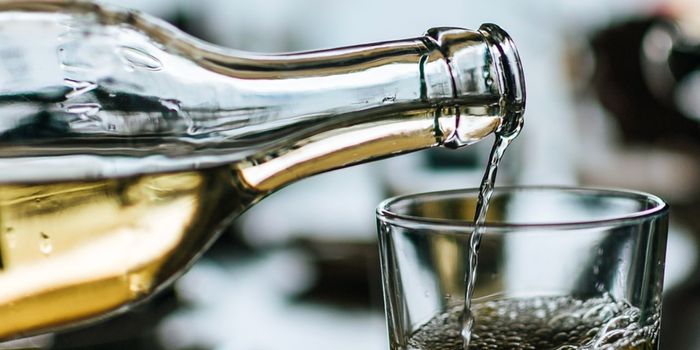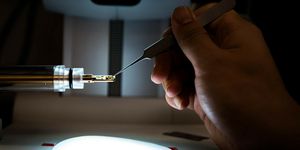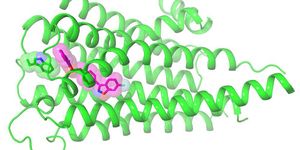A 'Timer' in DNA Sets the Rate of Random Mutations
Every time cells divide, billions of letters of the genetic code have to be copied. That means that a few mistakes slip through the machinery once in a while. Now researchers have learned more about the errors that happen. The helical shape of DNA appears to contain a kind of timer that sets the rate at which specific mutations spontaneously occur. Some DNA bases can change form transiently, which allows the wrong ones to be inserted into the helix. Such errors may lay the groundwork for serious disorders like cancer or may help drive evolution.
"Increasing or decreasing the rates of spontaneous mutations could significantly alter the ability of an organism to evolve or alter its susceptibility to disease," explained Hashim M. Al-Hashimi, Ph.D. He is senior author of the report describing the findings, published in Nature, and is James B. Duke Professor of Biochemistry and Chemistry at the Duke University School of Medicine. "An interesting question is: What determines the mutation rate in a living organism," Al-Hashimi said. "From there, we can begin to understand the specific conditions or environmental stressors that can elevate errors."
Polymerases are molecules that help copy DNA; they recognize the shapes of base pair interactions, adding in the proper bases and removing the wrong ones. G goes with C and A with T, but, the polymerase makes a mistake in about one of every 10,000 bases. They remain in the genome as a mutation unless they are repaired.
It had been proposed, as long ago as the landmark Watson and Crick paper describing the double helix, that bases might be able to change shape. That would allow mispairings. Al-Hashimi and colleagues used a tool called NMR relaxation dispersion to verify these “quantum jitters,” which only last an instant.
This work confirmed that bases G and T shapeshift at roughly the same rate as polymerases that allow mismatches of G and T. When bases rearrange, there are two forms; the new work shows one form dominates under normal conditions - the tautomeric form. Another form, the anionic form, was dominant in times of stress.
"In the past, we knew DNA polymerases make mistakes during DNA replication but did not know how they do it," said Zucai Suo, Ph.D., Ohio State professor of chemistry and biochemistry. "Now, our study provides a mechanistic sense for how the mistakes arise."
The work is a "convincing validation for the chemical origins of mutations proposed by Watson and Crick in 1953," commented Myron Goodman, Ph.D., a professor of molecular biology and chemistry at the University of Southern California, who was not part of this study. "It is significant scientifically, and even though it took about 65 years to prove, it also demonstrates the folly of ever betting against Watson and Crick."
“The textbook depiction of the iconic double helix shows a static double-stranded structure, but it turns out that on rare occasions it can morph into other shapes that exist for exceptionally small periods of time," Al-Hashimi said. "Though some might question the importance of such states, there are a growing number of studies showing they can be major drivers of biology and disease. Given the difficulty in observing these phenomena, it makes you wonder how many more states are out there dictating the outcomes of biology that we don't even know about."
Some sequences seem to mutate more rapidly than others. Some experiments by Ohio State biochemists Zucai Suo and Walter Zahurancik showed that a GC-rich region had more quantum jitters and more mutations compared to an AT-rich area. The researchers plan to follow up on their findings.
Sources: AAAS/Eurekalert! Via Duke University, Nature









